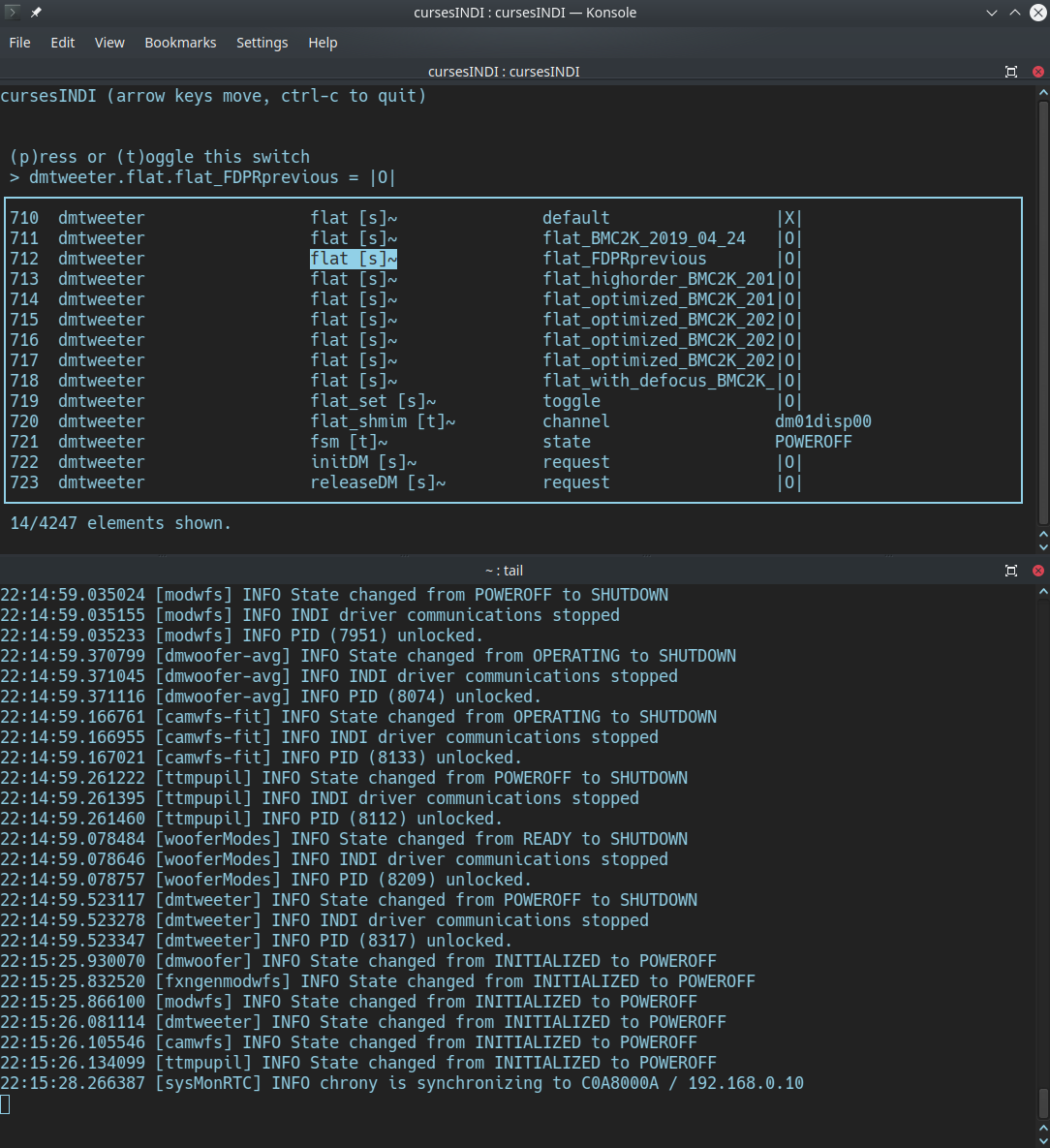cursesINDI
The instrument interface of first and last resort.

The cursesINDI tool is available on all MagAO-X computers (including
VMs and the test bed) and enables viewing and manipulation of the
instrument settings via low-level properties and the INDI protocol. It
can be useful when adding new drivers to the system, or when trying to
track down a strange behavior in a higher-level GUI interface.
You do not need to be xsup to run cursesINDI, but you do need
localhost:7624 to connect to a local or remote indiserver. This is
the case when SSHed in to AOC, RTC, ICC, or the testbed (TCC);
otherwise, you can use SSH tunneling.
Overview
Start cursesINDI from a terminal with the cursesINDI command.

screenshot of a terminal showing cursesINDI in action
The terminal will blank and show something like the top pane in the screenshot above. Note: that you may need to resize your terminal to see all five columns:
index
device name
property name (and meta info, see below)
element name (see conventions below)
value
By default, you’re in “search” mode. Start typing a device name and
cursesINDI will scroll the list to bring that device into view.
Right-arrow over to the value column, and the search: prompt will
change to (e)dit this number. Hit the e key and you’ll be
prompted to set devname.propname.element=. Type in your new value,
hit enter, and confirm (after checking carefully) the new value with
y. (Or, you can hit Esc to get out of setting the value.)
Note that many properties are read-only, and you will not be offered to edit them if so.
cursesINDI also shows you the current value of the element you have
selected as set devname.propname.element = <value>. Text and numbers
are displayed as transmitted by INDI. Switches use |O| for off and
|X| for on.
Property meta info
The bracketed letter indicates whether a property is a [t]ext,
[n]umber, [s]witch, or [l]ight as defined by INDI. The
character after the brackets can be ~ (Idle), - (Ok), *
(Busy), or ! (Alert). You’ll see Idle properties switch to Busy when
you set them, and back to Idle once the state you’ve set has been
reached.
Element naming convention
In the MagAO-X instrument, the convention is for settable properties to
expose their current value and their target value as two
elements of the property. This is useful to, e.g., command stages and
compare their current location to their commanded one. (Thanks to
limitations in INDI, “read-only” can only apply to properties, not
elements. Functionally, current is read-only and all edits are to
target.)
Process Logs
All process logs for INDI-connected MagAO-X applications are streamed to
INDI clients. cursesINDI writes these as they are received to the
file /tmp/cursesINDI_logs.txt. You can monitor these logs in
real-time with the command
$ tail -f /tmp/cursesINDI_logs.txt
The result is shown in the bottom pane of the above screenshot. Most terminal programs allow you to split the screen, making for a nice combined system control panel with the logs on the bottom. The image above shows this.
The cursesINDI log file will only contain up to 1000 entries, at
which point is emptied and restarted. For more detailed inspection of a
processes history you must use the logdump utility.